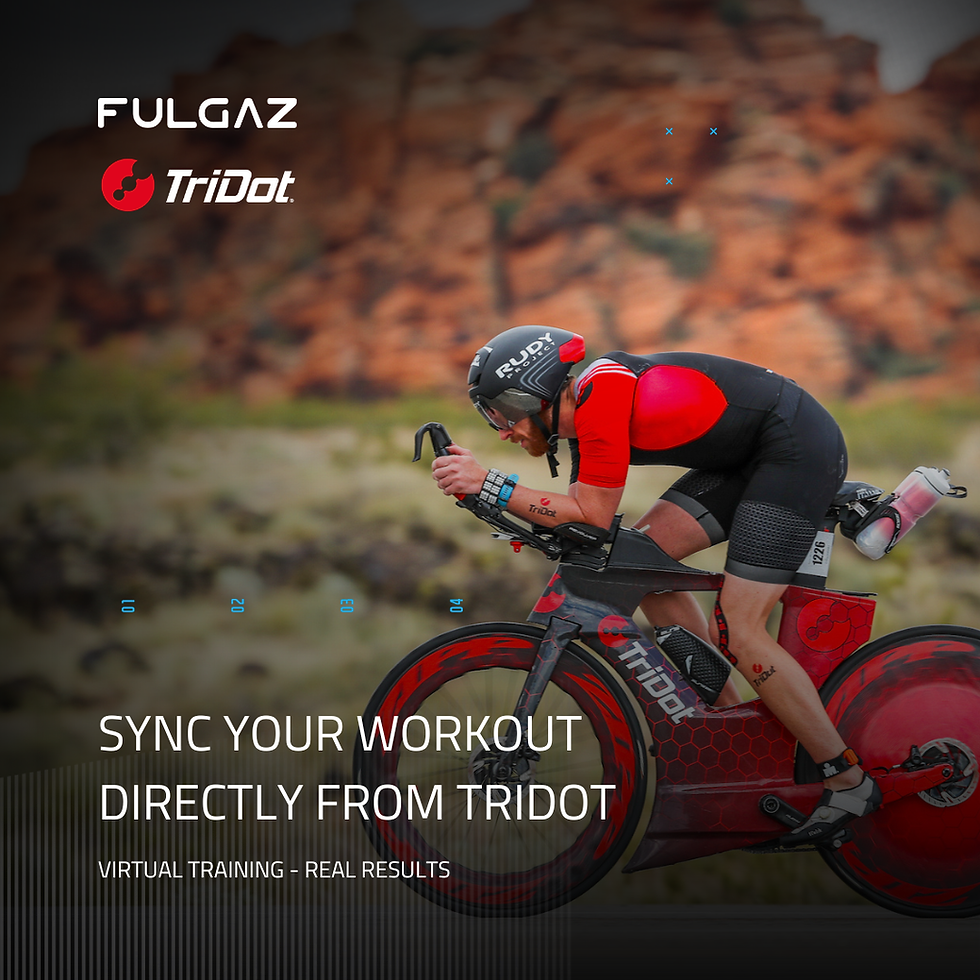Want a Smarter way to race? Are you using NTS (Normalised Training Stress) and RACE X to plan your Triathlon Training Sessions?
- Nick de Meyer
- 6 days ago
- 4 min read

Are you using TSS to pace your long-course races?
Most triathletes aim for a “textbook” 280 TSS on the Ironman bike — but that number doesn’t tell the whole story.
What it doesn’t account for:
🧱 Heat, humidity, or wind
🧭 Elevation and course profile
Time trial vs road bike
😓 Accumulated fatigue
That’s where TriDot’s Normalized Training Stress (NTS) is different.
NTS reflects your true training stress, adjusted for real-world conditions and your current readiness. That means no more second-guessing your pacing — and no more surprise blow-ups on the run.
📈 If you coach or train using data, NTS gives you a smarter way to plan, race, and recover. Get a plan that gets you.
Book your free consult. https://app.tridot.com/onboard/sign-up/nickharris
🏊🏃 Why TriDot’s NTS Is a Smarter Way to Measure Training Load in Triathlon Most triathletes know about TSS (Training Stress Score) from platforms like TrainingPeaks, or WKO5.
But if you've ever finished a brutally hard session — in choppy open water, on a windy climb, or in 30°C heat — and seen a surprisingly low score, you’re not imagining it. That’s because TSS (and its siblings, rTSS and sTSS) often miss the context of your effort.
Enter TriDot’s NTS (Normalised Training Stress) — a more adaptive, accurate system that reflects the real-world load of swim, bike, and run training.
🧠 The Classic Ironman Example: “Aim for 280 TSS on the Bike” You’ll often hear this advice in Ironman circles. Why 280? Thats the calculated number that will mean you can run well off the bike. Too high and your run suffers, too low, you could have gone faster :
“To set up a good race, aim for around 280 TSS on the bike.” It’s backed by research and race data. On paper, it sounds solid — 280 TSS is a well-paced, high-quality ride that leaves enough in the tank for the marathon.
🚫 But here’s the problem:
TSS doesn’t factor in how you got to 280.
It ignores:
Bike type (road vs TT)
Course profile (flat vs hilly)
Heat, humidity, wind
Altitude or elevation gain
Surface type (smooth road vs chipseal)
Two riders could both hit 280 TSS, but one might arrive at T2 fresh and ready, the other fried from grinding up hills in 32°C heat with a headwind.
🧠 NTS > TSS:
A Better Way to Race Smart TriDot’s NTS solves the “280 TSS” trap by personalising the stress score based on:
Your actual effort (not just power or pace) Your environmental load (heat, wind, humidity, hills)
Your current fitness, fatigue, and form
✅ With NTS, you’re not aiming for a fixed number — you’re aiming for a training load appropriate for your body, on that course, on that day.
It’s smarter pacing. You might ride only 250 TSS on a hot, hilly course but register 275–285 NTS, which is a more accurate reflection of what your body actually experienced.
🏊 Swim | 🚴 Bike | 🏃 Run — How NTS Compares
🧪 What The Research Says While NTS is proprietary, the science backs its core ideas:
Heat & humidity raise HR and RPE significantly → González-Alonso et al., 1999
Wetsuit use lowers energy cost in swims → Chatard et al., 1995
Pacing alone can’t explain true load in variable terrain → Foster et al., 2001
Altitude, terrain, and environmental stress impact VO₂ → Wilber, 2004
✅ Final Takeaway
Don’t blindly aim for 280 TSS. Aim for the right stress for you — based on course, conditions, and your current readiness.
That’s exactly what TriDot’s NTS does. It’s smarter, fairer, and far more reflective of the load you’ll carry into T2 (and beyond).
How good is Tridot? Test it out for 2 weeks for FREE:
The Old TSS model is dead, it's actually based on averages from cycling!
You're not average though, and you swim, bike and run, and do strength training and flexibility...you do those last 2, don't you?
Tridots NTS (Normalised Training Stress) model adapts and changes throughout your workout, per second, according to which zone and intensity you are in at that particular time.
The Tridot coaching platform also allows for changes in temperature, elevation and humidity and your environment!
That's a massive game changer in the coaching world!
Plus, it knows that the 2nd half of your workout gets harder than the first, or that the 4th interval of 8 gets significantly harder than the 1st and accounts for this
So what's the result?
It adapts to you more as an athlete, which then affects your workouts for the next day and next few days, either reducing load or increasing, using machine learning and AI adaptive and predictive analytics from your own training history, and basing this to help you peak better, and train more effectively
Do the right training right!
That's what Tridot are about! And I'm a Tridot coach! Are you in for the very best level of coaching there is?
You deserve it! Sign up here for a 2-week free trial on us :
You'll receive free member onboarding and training zones and races set up in Race X (race prediction for each discipline)


































Comments